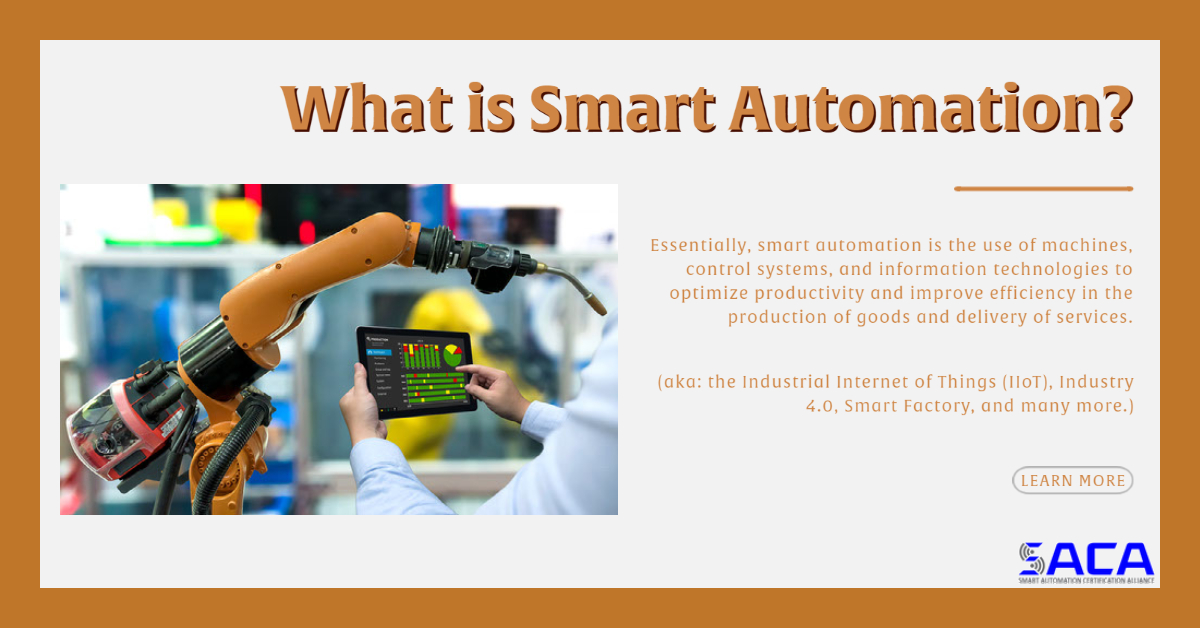Robots Continue to Drive Adoption of Advanced Automation Technologies
Are you old enough to remember when robots were futuristic, rather than an ever-expanding part of our everyday lives? While most of us still don’t have Jetsons-level robots to take care of all our housework, many of us do own robotic vacuums that at least clean the floors on a regular basis.
Many of us also work alongside robots in the workplace. This is especially true if you’re in any kind of modern manufacturing. From welding robots to automated guided vehicles, robots have become deeply ingrained in today’s manufacturing facilities that are embracing all sorts of new advanced automation technologies.
In a recent Forbes article, author Steve Banker recounts his experiences attending MODEX trade shows in 2016 vs. 2024. In 2016, he only remembered three robotics exhibitors at the show. This year, however, “33 exhibitors had the word ‘robot’ or ‘robotics’ in their title. And almost all the large material handling vendors and systems integrators that don’t have the term ‘robotics’ in their name, were also displaying bots.”
That’s why his visit to MODEX 2024 led Banker to declare this “the year of the robot.” What caught Banker’s eye this year were the “robots that have ‘hands’ for picking cases or eaches.” According to Banker, “[e]ach picking involves picking individual units and putting those items in a container. Until recently, each and case picking were just too difficult for bots.”
The robotics on display at MODEX 2024 revealed solutions that have made each and case picking possible by combining five different technologies:
- Robotic arms: “This is a mature technology that has been used for years in automotive manufacturing.”
- Robotic “hands” powered by suction cups: “The solutions have compressors that provide the right amount of suction for picking different sizes and weights. There can be different arrays of suction cups.”
- Vision systems: “Vision systems combined with AI allow the system to know what suction cups to initiate and how much compression to use.”
- Artificial intelligence: “Machine learning also comes into play. For example, if the system has trouble picking a particular item, an alert can tell a planner not to allow that stock keeping unit to enter the robotic picking queue.”
- Software: “Finally, complex software can be necessary. If you are floor loading a truck with containers of different sizes and weights, the software knows that the weight must be evenly distributed, that easily crushed items need to go on top, and there is a Tetris type solve to make sure as many items as possible can be loaded. Pallet loading requires a similar type of software solve.”
While Banker notes that many of these solutions “picked slower than a human would and could not cover the same range of SKUs that a person could,” he notes that they’re the future because “people burn out on this kind of task after a couple of hours and need to be rotated to a different task. A bot just keeps working. It is also increasingly tough to hire warehouse workers. Finally, a bot can work in an environment, hot and cramped, that a worker would not.”
Should this concern humans who fear being replaced by robots? Absolutely not! Companies that have embraced new automation technologies report that employee fears of job loss are overstated, because these advanced automation technologies will not and cannot replace highly-skilled human workers. Simply put, there has to be someone to operate, maintain, repair, and troubleshoot these technologies throughout the facilities they’re used in.
Whether you decide to train a current worker or hire someone with the special skills you need, you’ll need to be sure they have the skills to hit the ground running. If they possess a certification from the Smart Automation Certification Alliance (SACA), you can feel confident they’ve already proven they have the knowledge and hands-on skills needed for working with advanced smart automation technologies. For example, companies looking to implement the latest robotics technologies would be interested in workers with SACA’s Certified Industry 4.0 Robotics Specialist certification. Be sure to check out SACA and all it has to offer!
- Published in News
Helpful tips on how to build a smart automation résumé
To view a multimedia version of ‘Helpful tips on how to build a smart automation résumé‘, please click here.
New year, new you – right?
With the end of 2020 approaching quickly, many are circling Jan. 1, 2021 as an opportunity to improve their happiness and wellbeing. For some, that signals a career change – a way to improve on their daily professional grind.
While COVID-19 has made the job market volatile, there are still careers out there with jobs waiting for people to apply for them. And some of those jobs happen to fall into a sector known as Smart Automation.
What is Smart Automation?

While some know the term as “smart automation”, it goes by many different monikers: the Industrial Internet of Things (IIoT), Industry 4.0, Smart Factory, and many more.
Essentially, smart automation is the use of machines, control systems, and information technologies to optimize productivity and improve efficiency in the production of goods and delivery of services. From building automobiles to sewing buttons on a shirt, it is used all around the world to improve the speed and quality of manufacturing. However, what makes the automation “smart” is a lot like the same idea used when describing smartphones: we are connecting to the Internet of Things (IoT), which allows devices to communicate with other devices via the Internet.
This has ushered in a brand new way of manufacturing, which many are viewing as the Fourth Industrial Revolution – which explains the name Industry 4.0. Smart automation holds the potential for a massive impact on industrial efficiency and proficiency. By combining cyber-physical systems, automation, and the Internet of Things, companies can begin to create a smart factory environment, which could include a team of robots communicating with each other (and human workers) to report on a wide variety of information, such as cycle times, mechanical breakdowns, predictive maintenance, and more.
Why should I be interested in a career in Smart Automation?
While the real boost behind smart automation involves robots and self-driving vehicles, it does not leave human workers out in the cold. As an increase in usage of robots happens, low-skill assembly line-type jobs will begin to fade out, making ways for new careers that have never existed before.
The demand for these highly-skilled workers that can program, analyze, and maintain many parts of these complex systems is so tremendous that companies are having difficulty finding candidates to accept these careers in manufacturing, which has led to a sector-wide hiring struggle, known as the Skills Gap. This means these jobs – many of which are high-paying – are going unfilled due to the lack of qualified workers.
But smart automation doesn’t just live on an assembly line floor. In fact, thanks to the use of smart sensors, smart devices, and other new cutting-edge technologies, which possess the ability to create an enormous amount of data to be monitored and shared via cloud technology, many of the jobs available today require just as much knowledge on IT and cyber-security as any other typical manufacturing skill.
How do I build a résumé for jobs that don’t exist?
Like most jobs, you don’t pick a career by simply liking its name or title: you pick your career based on the skills that you’re good at, or enjoy doing. So with that in mind, here are four tips on how you can improve your smart automation résumé:

Tip #1: Spotlight on your “smart” skillset
By highlighting your “smart” skills – and highly-coveted personal skills like problem solving, critical thinking, and others – as opposed to a particular job’s title, you will be more adept to finding the ideal job for your skillset.
So when constructing your résumé, put an emphasis on your “smart” skillset that showcases you have the specific knowledge and know-how for the skills they are looking for. According to a recent study by Deloitte, many of the future jobs will revolve around these skills:

Tip #2: Include a focused professional summary statement
When introducing yourself through your résumé’s Professional Summary section, include any pertinent industry-needed skills that were called out in the company’s job listing. (Called “value proposition”, highlighting a collection of skills you can provide curated to a particular business or position makes you a more attractive candidate in the process.)
Be straightforward in explaining your skillset, and what you can offer this specific company. Not only will it showcase your most important attributes as early in the review process as possible, but it will also prove to the company that you took the time to study the job listing, not just submitting résumés blindly without reading.
Also, focus on strong character traits that prove your experience, and back it up with accomplishments. Remember to show, not just tell, examples of how you can improve their bottom line. If warranted, consider a compelling statement that describes your current (or previous) profession, especially if they include the “buzzword” skills a company is specifically looking for.

Tip #3: Don’t overlook your training – it matters!
Whether it’s your first career in industry, or you’re retooling for a future position or promotion, training in smart automation matters. From the bedrock knowledge of automation, to understanding all of the safety protocols around these automated machines, having industry-relevant training is critical for positions like these.
So when compiling your previous academic or professional experience, make sure to list any related classroom experience, as well as specific courses that pertain to the position you’re applying for – remembering to focus on your skillset.
If it applies to you, consider adding any apprenticeships, mentorships, or other non-traditional means of training. Don’t overlook any of your training, no matter how menial you might think it is.

Tip #4: Certifications can make (or break) your job search
Let’s be honest here: if Candidate A and Candidate B both have similar skillsets, experience, and recommendations – but only one of them holds an industry-recognized Industry 4.0 certification – it should be pretty clear who is going to get the first job offer.
Most Industry 4.0 or Smart Certifications can showcase to businesses that you are trained under the standard guidelines established by industry leaders. In fact, most companies will prioritize candidates that hold an official industrial certification from an industry-recognized institute, like SACA, for example.
Since these certifications play such a crucial role in the hiring process, consider upping your training regime to include industry-recognized smart credentials.
Getting involved with Industry 4.0 is a “smart” bet
In summary, it’s simple: Industry 4.0 jobs are aplenty, high-paying, and there for the taking.
But they’re not for everybody. These jobs take a specific skillset that rely heavily upon critical thinking and problem-solving. The challenges, though, should not dissuade someone from pursuing a career in smart automation. Instead, it highlights the pressing need for qualified workers in this field of work, and the unlimited possibilities these positions could bring to a world of “smart” manufacturing.
- Published in News




